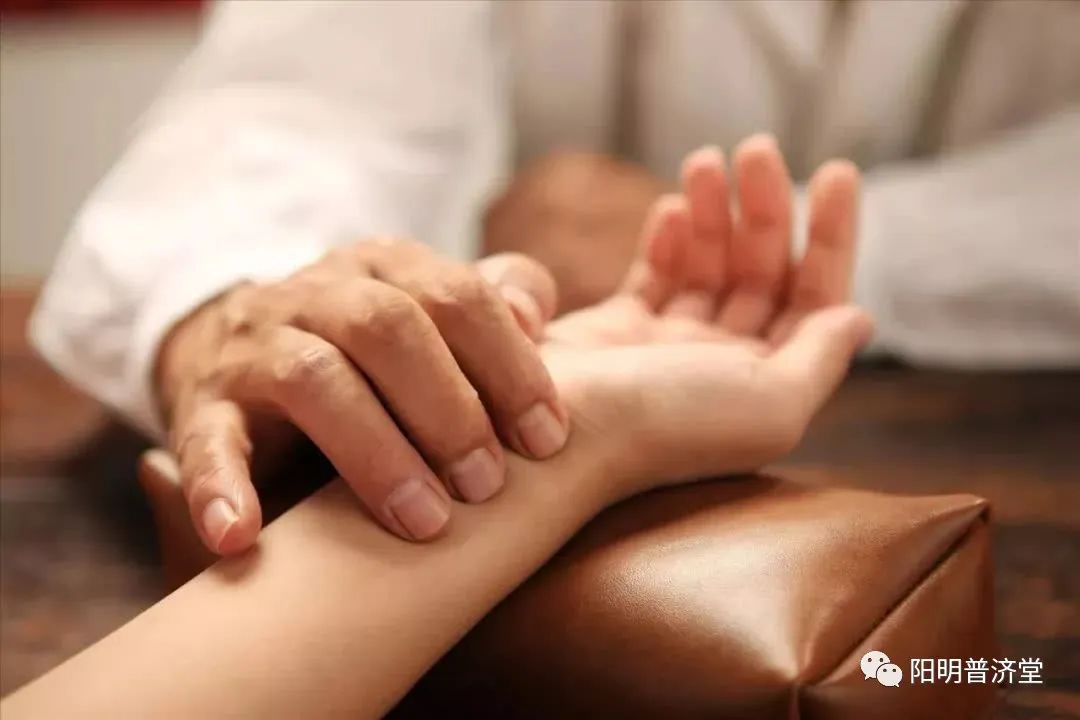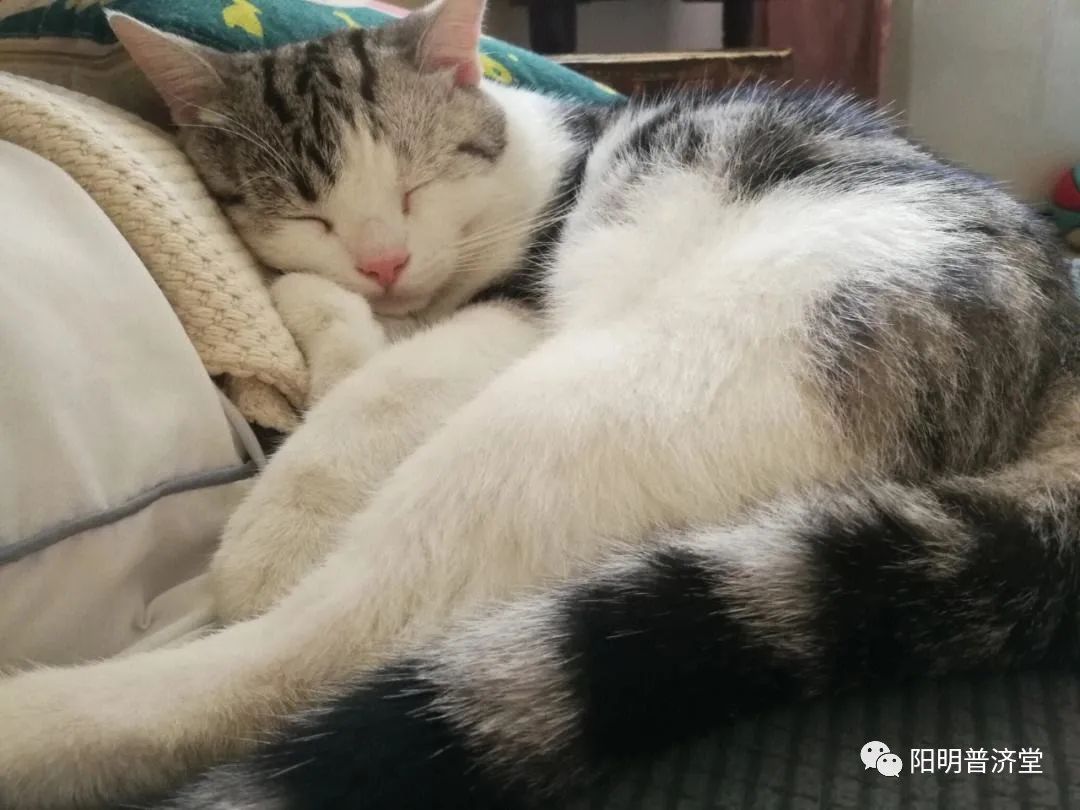
1
“Pulse diagnosis” primarily consists of two types. One is the tangible pulse, and the other is the intangible pulse. The tangible pulse refers to physical connections, which can include taking the pulse or palpation. The intangible pulse represents concern, care, and compassion, indicating a close emotional connection.
For example, when we are strangers passing by on the street, there is no relationship. However, when we sit together, a connection is formed. If I care about you deeply, an emotional link is created, which is the intangible pulse.
Do not underestimate this emotional connection; if a person is unwilling to allow you to treat them, your skills will be of no use.
2
In Traditional Chinese Medicine (TCM), we excel at pulse diagnosis. Why can we determine the overall state of Qi and blood through the pulse-taking process? The pulse-taking site is called the “Qi mouth” (气口, qì kǒu), also known as the “cun position” (寸口, cùn kǒu). For instance, when driving on a highway, we pass through toll booths. When exiting, the toll system knows how far you have traveled and how much to charge, which illustrates the concept of the Qi mouth and cun position. This means that at the Qi mouth, we can detect the patterns of Qi and blood flow, as well as their speed and volume.
 Additionally, ancient practitioners did not only examine the pulse at the wrist; there is a pulse method called “Three Regions and Nine Pulses” (三部九候, sān bù jiǔ hòu). In addition to the cun position pulse, they would also check the “Renying pulse” (人迎脉, rén yíng mài) at the neck and the “Fuyang pulse” (趺阳脉, fū yáng mài) at the foot. However, the Renying and Fuyang pulses are less commonly used today, primarily because they are less convenient to access compared to the cun position, which is the easiest and most accurate to palpate.During acupuncture, sometimes after inserting a needle, practitioners will check the Renying or Fuyang pulses, then compare them with the cun position pulse to assess the strength and effectiveness of the treatment. This serves as both a diagnostic tool and a basis for treatment.There are also two major pulses on the back, one near the scapula and another near the Mingmen (命门, mìngmén). Additionally, pulses can be felt in the groin and abdominal aorta; essentially, any place where a pulse can be detected can be used to assess Qi and blood.In pulse diagnosis, the term “切” (qiè) also implies a “cross-section”. We place our hand on a blood vessel’s cross-section and apply pressure to gather information about that cross-section. Understanding this principle allows us to focus and feel its essence.3When we were young, the process of training our palpation skills went something like this:We started by feeling some inanimate objects. Beginning with harder objects, we would touch table legs, fruits, or even play with Mahjong tiles, gently feeling them to understand their shapes and textures.After some time with hard objects, we would move on to softer items, such as sofas and blankets, to feel their textures.Once we felt sufficiently sensitive, we would then touch living creatures like cats and dogs.
Additionally, ancient practitioners did not only examine the pulse at the wrist; there is a pulse method called “Three Regions and Nine Pulses” (三部九候, sān bù jiǔ hòu). In addition to the cun position pulse, they would also check the “Renying pulse” (人迎脉, rén yíng mài) at the neck and the “Fuyang pulse” (趺阳脉, fū yáng mài) at the foot. However, the Renying and Fuyang pulses are less commonly used today, primarily because they are less convenient to access compared to the cun position, which is the easiest and most accurate to palpate.During acupuncture, sometimes after inserting a needle, practitioners will check the Renying or Fuyang pulses, then compare them with the cun position pulse to assess the strength and effectiveness of the treatment. This serves as both a diagnostic tool and a basis for treatment.There are also two major pulses on the back, one near the scapula and another near the Mingmen (命门, mìngmén). Additionally, pulses can be felt in the groin and abdominal aorta; essentially, any place where a pulse can be detected can be used to assess Qi and blood.In pulse diagnosis, the term “切” (qiè) also implies a “cross-section”. We place our hand on a blood vessel’s cross-section and apply pressure to gather information about that cross-section. Understanding this principle allows us to focus and feel its essence.3When we were young, the process of training our palpation skills went something like this:We started by feeling some inanimate objects. Beginning with harder objects, we would touch table legs, fruits, or even play with Mahjong tiles, gently feeling them to understand their shapes and textures.After some time with hard objects, we would move on to softer items, such as sofas and blankets, to feel their textures.Once we felt sufficiently sensitive, we would then touch living creatures like cats and dogs. After practicing for a while, you suddenly realize that when your hand is on someone’s pulse, it becomes particularly sensitive. After feeling inanimate objects, you will find that your heart and hand can merge, allowing you to be very sensitive to what you touch.This means starting with hard inanimate objects, then moving to soft ones, and finally to animals, before touching human pulses. If you start by feeling someone’s pulse, it will all feel the same. However, after practicing with inanimate objects, when you return to pulse diagnosis, you will be able to discern subtle differences because your heart and fingers are in sync. At this point, taking the pulse becomes very accurate.There are also other methods to consider. For example, you can take a lighter and memorize its shape. Then, wrap the lighter in a piece of clothing and feel through the fabric to locate it.Another example is to place hair between sheets of paper, then put the paper in an envelope, and feel through the envelope to sense the length and position of the hair. These training processes will refine your tactile sensitivity.4Once we are able to take pulses, our teacher would take us to the market. While taking the teacher’s pulse, we would listen to others bargaining. For instance, while feeling for a slippery pulse with some stagnation, the teacher would ask about its direction: is it light, moderate, or heavy? While listening to his questions, we also had to pay attention to the bargaining: how much is a pound of cabbage? How many pounds did they just mention? We had to calculate it as well.Only after such training can you perform pulse diagnosis and inquiry with patients without being distracted, while also considering the bigger picture.The methods of observation, listening, and palpation discussed earlier are practices everyone can try. You may have previously played with an object unconsciously, but now, when you pick it up, you will consciously observe its shape, texture, and other details.When you observe closely, you will suddenly find a connection with the object, and your impression of it will deepen. This way, when you examine a person, the clarity of your perception will be vastly different.
After practicing for a while, you suddenly realize that when your hand is on someone’s pulse, it becomes particularly sensitive. After feeling inanimate objects, you will find that your heart and hand can merge, allowing you to be very sensitive to what you touch.This means starting with hard inanimate objects, then moving to soft ones, and finally to animals, before touching human pulses. If you start by feeling someone’s pulse, it will all feel the same. However, after practicing with inanimate objects, when you return to pulse diagnosis, you will be able to discern subtle differences because your heart and fingers are in sync. At this point, taking the pulse becomes very accurate.There are also other methods to consider. For example, you can take a lighter and memorize its shape. Then, wrap the lighter in a piece of clothing and feel through the fabric to locate it.Another example is to place hair between sheets of paper, then put the paper in an envelope, and feel through the envelope to sense the length and position of the hair. These training processes will refine your tactile sensitivity.4Once we are able to take pulses, our teacher would take us to the market. While taking the teacher’s pulse, we would listen to others bargaining. For instance, while feeling for a slippery pulse with some stagnation, the teacher would ask about its direction: is it light, moderate, or heavy? While listening to his questions, we also had to pay attention to the bargaining: how much is a pound of cabbage? How many pounds did they just mention? We had to calculate it as well.Only after such training can you perform pulse diagnosis and inquiry with patients without being distracted, while also considering the bigger picture.The methods of observation, listening, and palpation discussed earlier are practices everyone can try. You may have previously played with an object unconsciously, but now, when you pick it up, you will consciously observe its shape, texture, and other details.When you observe closely, you will suddenly find a connection with the object, and your impression of it will deepen. This way, when you examine a person, the clarity of your perception will be vastly different. ● Feel the details of sounds with your heart● Summary of Dr. Lin Jie’s TCM course information● Use love to break the limitations of time and space(This article is compiled from the transcripts of Dr. Lin Jie’s TCM courses)
● Feel the details of sounds with your heart● Summary of Dr. Lin Jie’s TCM course information● Use love to break the limitations of time and space(This article is compiled from the transcripts of Dr. Lin Jie’s TCM courses)

